Remix Redux
In the silent film era, the roots of the DJ
Emily Thompson
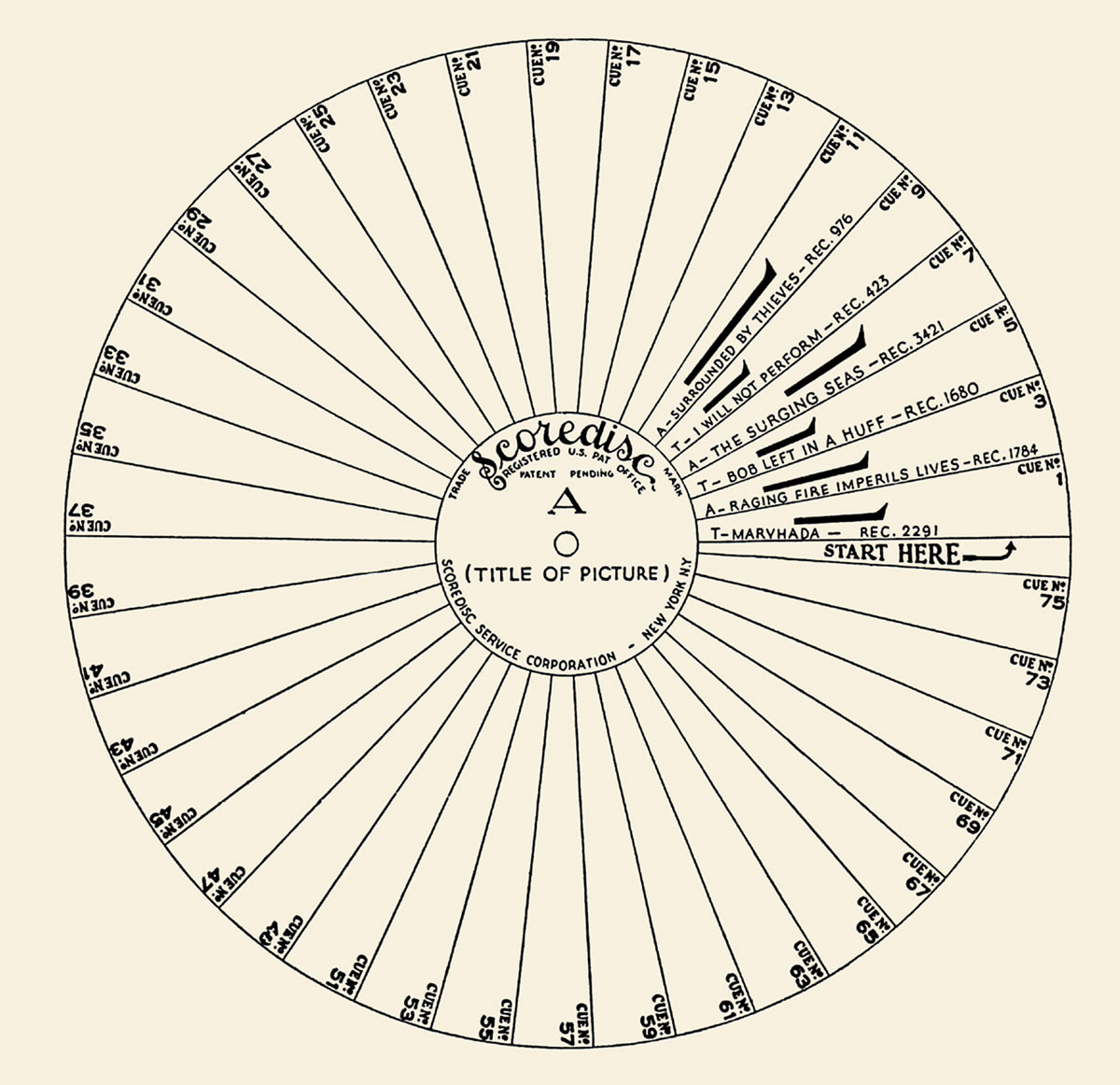
A photograph of a simply handcrafted wooden box constitutes the frontispiece to Bill Brewster and Frank Broughton’s history of the DJ, Last Night a DJ Saved My Life. The box, looking like the long-lost Ark of the Covenant, contains not two stone tablets but two turntables. It is identified by the authors as a “custom-made double turntable built in 1955 by Edward P. Casey of the Bronx, New York.” The humble box encapsulates the now well-known history of the DJ’s art of remixing recorded sounds. From its post-war origins in the Caribbean musical culture of sound systems, the practice migrated to and was transformed within the West Indian immigrant communities of New York’s outer boroughs. It developed in the hands of African-American and Latino DJs, culminating in a celebratory embrace of the hip hop aesthetic of cut-n-mix by mainstream pop culture across America and around the world.
This story, told and retold in countless histories of the DJ, is complicated, however, by the existence of another box which appeared decades earlier. In 1929, RCA—and numerous other companies—manufactured a dual turntable unit that was the functional equivalent of the modern DJ’s kit. This box was deployed not in dance halls but in motion picture theaters, where it played a vital, if brief, role in the transition from silent to sound motion pictures. It subsequently disappeared into history’s long-forgotten and silent corners, but by bringing it back to light we can recover not only an important episode in film history but also a curious prehistory to the remix aesthetic that resounds today.
While attempts to sync cinematic images to phonographic sound had occurred regularly ever since motion pictures were first invented in the 1890s, virtually all such attempts had failed. They failed to maintain mechanical synchronization between sound and image, and they failed to produce sound sufficiently loud for everyone in a theater to hear. The acoustical phonograph of the early twentieth century, whose only source of power was the sonic energy writ into the undulating groove of the record, was loud enough to fill the front parlor of a home with music, but not a nickelodeon theater that might seat several hundred or more moviegoers.
During World War I, the phone company AT&T expanded its interest in sonic technology beyond the bounds of the telephone system. Engineers at its manufacturing subsidiary, Western Electric, developed an electrically based system for sound recording and reproduction which utilized vacuum-tube amplifiers to achieve a much greater volume of sound. After the war, the technology was applied to the phonograph, and the flowery horn of the old Victrola was replaced by the bass-thumping loudspeaker of the new, electrically powered Orthophonic, or “right-sounding,” phonograph. Western Electric engineers also devised a way to link their new phonographs electrically with motion-picture cameras and projectors, and they redesigned the records to hold the approximately ten minutes of programming that made up a standard reel of film.[1] The result was the synchronized and amplified sound that had long been sought for sound-motion pictures.
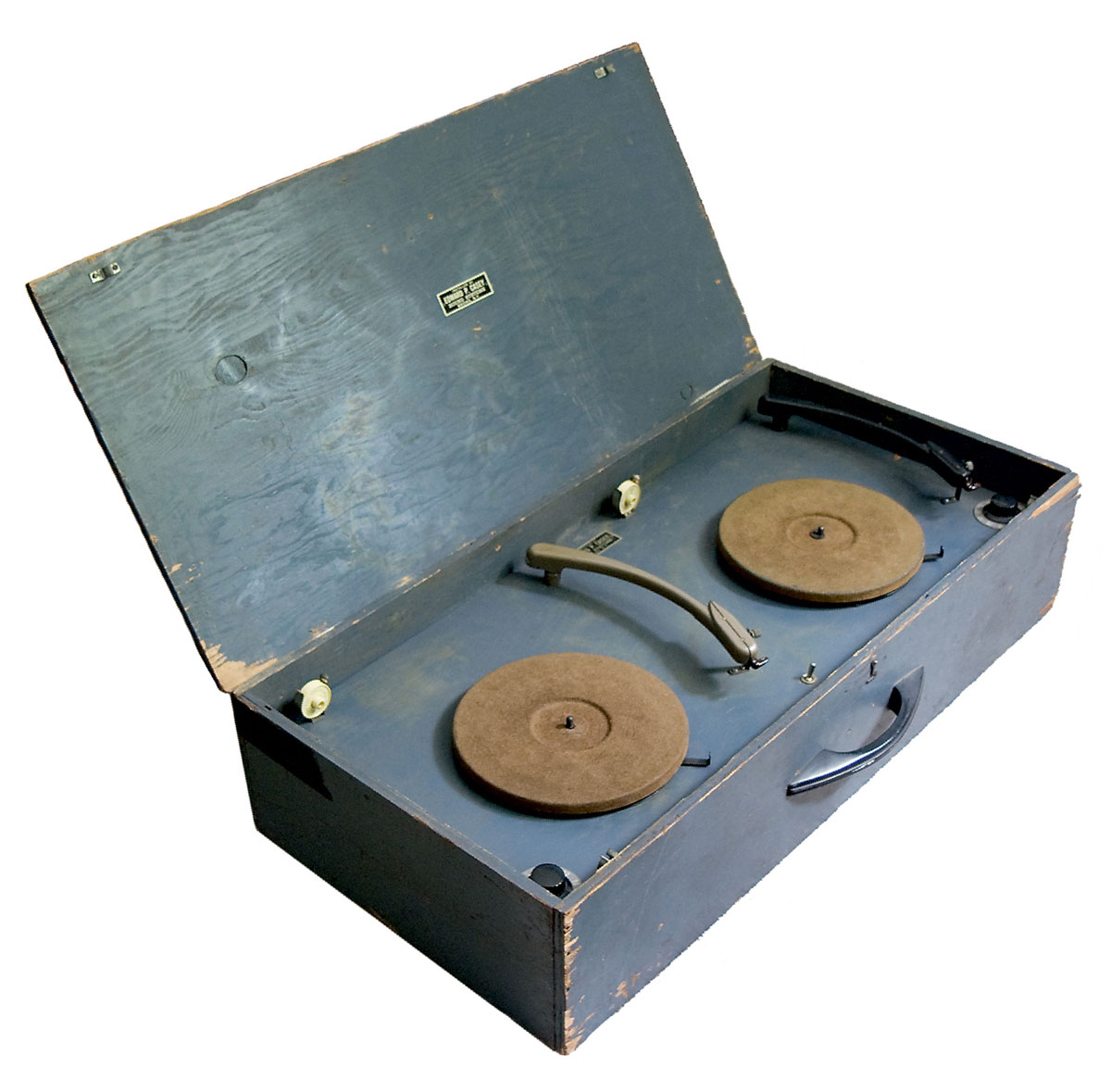
The Western engineers went west to pitch their new product to Los Angeles’s movie moguls, but the film industry’s biggest players were uniformly uninterested, convinced by years of hard experience that sound pictures were doomed to fail. Only Warner Bros.—a second-tier studio with ambitions to move up in the Hollywood hierarchy—agreed to gamble on the new technology. The first Vitaphone pictures, as the new sound movies were called, began to appear in specially equipped theatres in 1926.
Vitaphone programs typically opened with a series of shorts, one-reel musical performances by famous vaudevillians which replaced the series of live acts—singers, comedians, acrobats—that preceded feature films in most silent cinemas. While these shorts were filled with dialogue as well as music, the early Vitaphone feature films that followed were not talking movies, but rather traditional silent fare, now accompanied by a recorded musical score instead of a live performance by theater musicians. Warner Bros.’ goal was not to revolutionize cinema by giving it a voice, but simply to improve it by controlling and standardizing its musical aspects. Studio-generated recorded musical scores would replace the theater-specific performances with a sonic product that would be the same for every moviegoer in every town.
Of course, talking pictures would soon revolutionize the film industry in ways that the Warner brothers had never imagined. But from 1926 into 1929, as the transition to sound pictures took place, talking feature films were not the norm. What moviegoers saw on screen was no different from what they were used to seeing. What they heard was similar or perhaps better. In big-city picture palaces, the orchestral score now poured forth from loudspeaker horns rather than from live musicians performing in the pit; in small towns, memories of the often-mediocre musical accompaniments of the local pianist and drummer were washed away by the recorded swells of seventy-piece studio orchestras.
While theater musicians lost their livelihood, projectionists took on new tasks and responsibilities. Not only did they have to continue choreographing invisible transitions from one projector to another during reel-changes, but they now had to wrangle records as well as reels. Of course, records sometimes skip, and when a Vitaphone record jumped its groove, the manufacturers assumed that synchronization was irreparably lost. Operating manuals instructed projectionists to cut their losses and immediately start up the next reel and record, simply omitting any material remaining on the disc and reel that had fallen out of sync. But projectionists chose not to accept defeat in this way, and they grew adept at restoring sync on discs that had skipped. They did this by transgressing the long-standing First Commandment of phonography: “Thou shalt not touch the record.”
Vitaphone records almost always skipped forward, moving the sound ahead of the image. The loss of synchronization was immediately evident during dialogue sequences, but for non-talking films an incongruous juxtaposition of image and music could be just as noticeably out of sync, and audiences were quick to make their displeasure known. To enable the image to catch up with the sound, “the trick,” as one sound man recalled, “was to look at the screen and then close your eyes and hold the disc and let it slide on the turntable, and then take your hand off real quick and look at the screen. And you got quite expert. Some of the projectionists would look at it and say, ‘A-a-a, it’s jumped two grooves,’ and hold it down and take it off, and be pretty close to being in sync. In the meantime, of course, the audience is applauding, yelling and whistling, if you were out of sync.”[2]
By breaking the rules and grabbing the record, motion-picture projectionists began to construct a new relationship between phonograph records and the people who played them. No longer simply cueing the needle and letting the records play themselves, these men began to engage with the discs and intervene in their playback. And this was just the beginning.
After a theater had installed a new sound system, the management necessarily continued to show silent films as well as sound pictures, since there weren’t initially enough of the latter being produced to fill the bill seven days a week. In theaters that had fired their musicians, some projectionists began to deploy the sometimes-idle sound system to create their own sonic programs to accompany those silent films. Kenneth Graham, for example, a projectionist at the Fox Golden Gate Theatre in San Francisco, installed a microphone in his booth to provide “voice-over” narration during silent trailers for upcoming films. He did it so well that the audience didn’t realize these weren’t “talking trailers.”
In 1927, Henri Tussenbrook of the Majestic Theatre in Hartford, Connecticut, connected a standard electric turntable to the theater’s new Vitaphone sound system and played standard Victor records to accompany the theater’s silent films. Tussenbrook’s playlist matched the music on record to the moods and actions on screen. For the Fox film The Loves of Carmen, his score included Pupilos Brujas by Jose Bohr y su Orquesta Tipica (Victor #79724); Toscanini’s Carmen (Victor #839); Dream Tango by the International Novelty Orchestra (Victor #20454) and twenty-five other discs. “The effect,” judged one listener, “was very good and it was hard to realize that the music had not been especially written and recorded for the picture.”[3]
Perhaps following the lead of enterprising men like Tussenbrook, different equipment manufacturers, including Western Electric, began to market special turntable units to provide recorded music and sound effects to accompany silent films. These devices were called “non-synchronous” units to acknowledge that, while the music would be chosen and timed to fit the mood and action on screen, the practice of cueing records in sequence could not match the precise level of synchronization between sound and image achieved through the Vitaphone process.
Non-sync systems, with mellifluous names like Orchestraphone and Theatrephone, Mell-O-Tone and Bell-O-Tone, generally consisted of a multi-turntable unit with a rotary control to fade the output from one turntable to the other. Advertisements described models with as many as six turntables available for simultaneous or sequential cueing, but two platters was clearly the standard. If the theater was already wired for sound, the output of the unit would be tied into the extant amplifiers and loudspeakers. If there was no synchronous sound system in place, the theater owner would have to purchase and install an amplifier and speakers, but the cost was still far less than that of a full synchronous-sound outfit. Whereas Western Electric’s Vitaphone system cost thousands of dollars up front in addition to hundreds more each month in leasing fees, the Good-All Orchestrola non-sync system could be had complete for just 495 dollars. Good-All claimed to be delivering 250 such units per month in 1929, and 48 other manufacturers of non-sync units were listed in that year’s Film Daily Year Book.
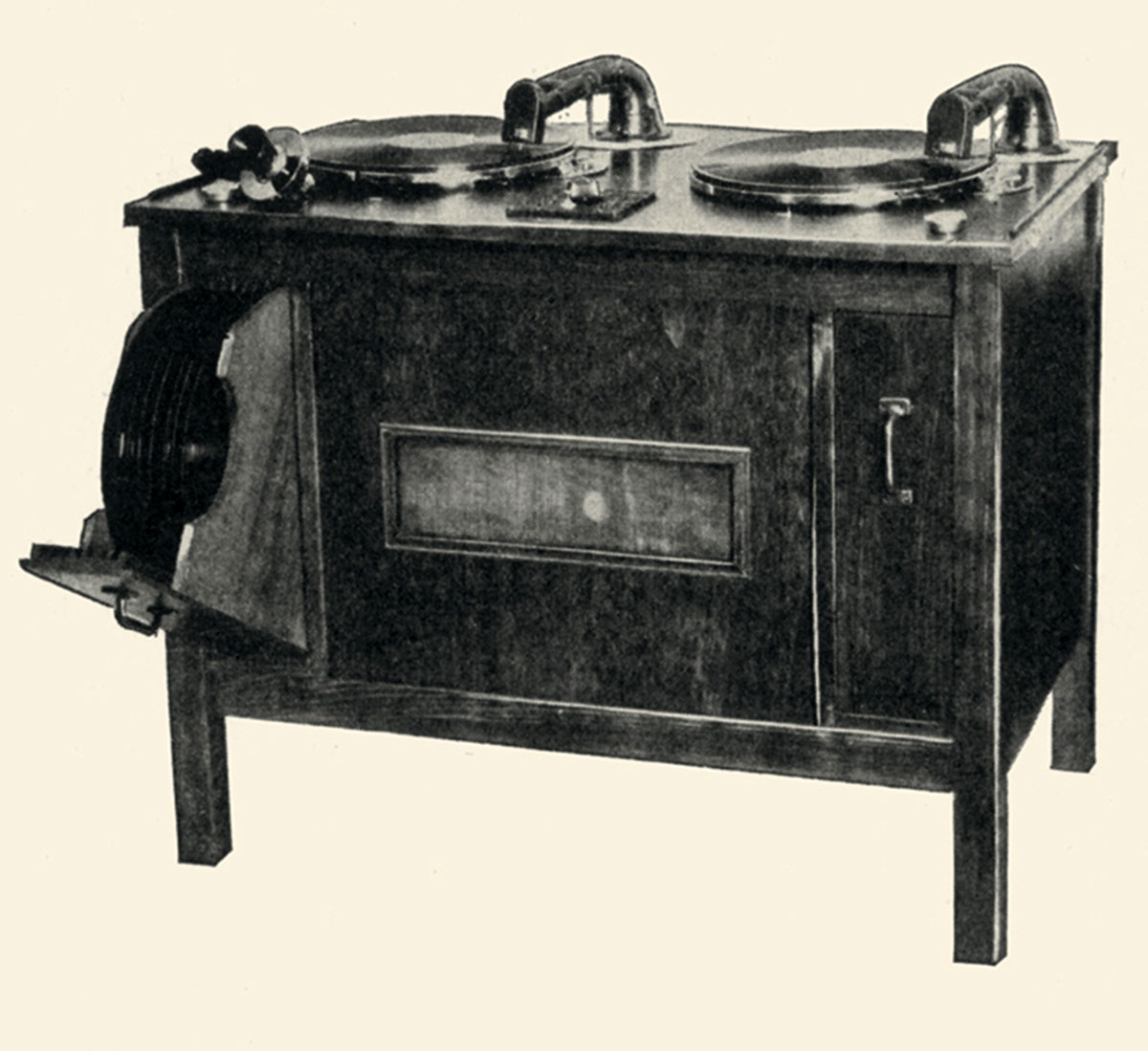
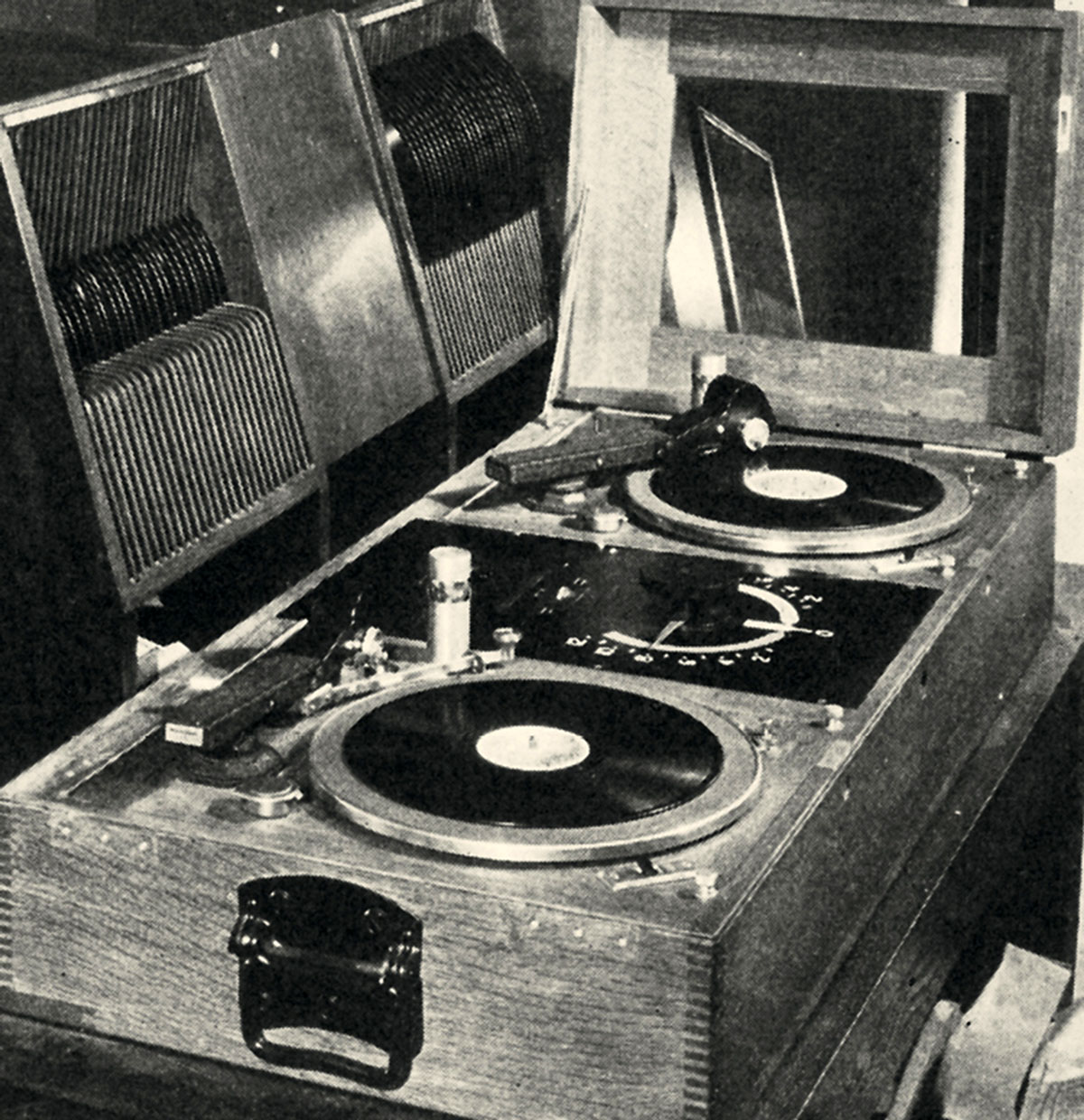
Who manned all these turntables? Apparently, it was not always men, as is clear from the occasional appearance of feminine pronouns in descriptions of non-sync operation. Many units were placed in projection booths where they were presumably operated by projectionists, an almost exclusively male group given the strenuous, dangerous, and unionized nature of the profession. But some models were offered in attractive wood cabinets, which suggests they were intended not for the projection booth (where fire codes generally prohibited wooden furniture), but for the main house, perhaps even for the now-empty orchestra pit. It is likely that, in some theaters, the former accompanist was put in charge of the non-sync unit, possibly “performing” in front of the audience as before, but this time playing records instead of a piano or violin. In small-town silent cinemas, these musicians had often been women, and these women had long been the target of criticism by industry professionals for their perceived lack of talent. Advertisements for non-sync systems seized on this dissatisfaction with the performers in the small-town venues, emphasizing the benefit of the devices, which could now, through the technology of recorded sound, offer “The World’s Master Musicians—At Your Finger Tips!”
The non-sync units were not, in fact, the first attempt to construct a technological solution to the problem of inferior live music in movie houses. As film historian Rick Altman has described, a range of music-generating devices was designed and installed in silent cinemas.[4] Most notable were the photoplayer pianos, automatic or player pianos that were modified to meet the needs of motion-picture theaters. Whereas standard player pianos played only a single perforated-paper roll at a time, photoplayers could hold a battery of rolls, each containing the code for different songs or styles of music. Individual rolls within the battery could be cued instantaneously by the machine’s operator, causing the piano to shift suddenly from a sentimental melody during a love scene, to the martial strains of military marches, to whatever else the drama on screen required. Segues must have been non-existent, but if a theater lacked a living pianist capable of performing this kind of thematically varying accompaniment himself or herself, a less talented person would have been capable of cueing a photoplayer to similar, if not as seamless, effect.
Even the live performance of silent movie music, whether by lone pianists or full orchestras, had typically possessed a similarly mechanical aspect. Most musicians compiled their accompaniments—in advance if they had lead time, off the cuff if not—by cutting and pasting popular songs and classical themes into a pastiche that was ultimately more “assembled” than “composed.” Orchestra directors at the big city picture palaces drew upon expansive music libraries to compile their scores. Solitary pianists in more modest establishments used “cheat books” put out by music publishers, with which they could quickly and easily call up music that would change the mood from romantic to threatening with just the flip of a page. Recognizing the enormous market for sheet music that theater musicians constituted, music publishers distributed cue-sheets for specific silent films in circulation, indicating how to deploy their tunes to compile a professional-sounding score. The earliest Vitaphone scores, while recorded in the studio and reproduced in the theaters on disc, followed these compositional patterns and drew upon the same standard songs and themes that had served silent cinema for years. Not for another decade would the Hollywood Composer emerge as an auteur in his own right.
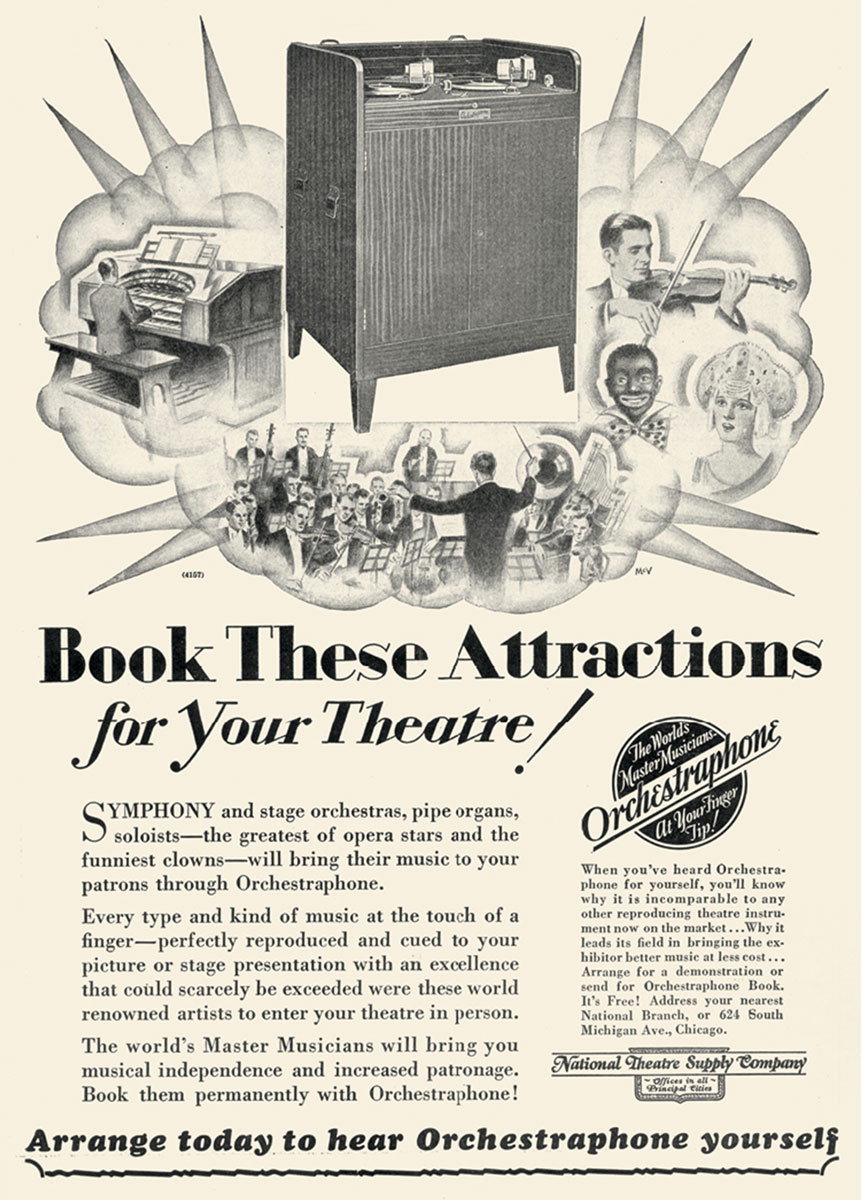
Following the practice of music publishers, record companies—as well as some manufacturers of non-sync systems—began to sell special libraries of discs, compilations of thematically organized music and sound effects from which operators could construct their scores. Victor labeled its non-sync offerings as “Pict-Ur-Music.” For an additional fee, some outfits, including Victor, offered cueing services for feature films, providing a cue sheet indicating which discs to deploy during each scene to create a truly “professional” sounding score. One company, Scoredisc, even offered an ingeniously simple technology that ensured appropriate and accurate selecting and cueing.
Scoredisc offered its clients a library of over a thousand discs of indexed music and sound effects. For each feature film in circulation, the company compiled an appropriate score out of the music and effects on these records. In order to enable theater personnel to generate that score in their house, Scoredisc sent along not a cue sheet, but a pair of cardboard discs, one for each turntable on the non-sync unit. Each disc was inscribed with a series of cuts radiating out from its center, with each cut constituting a cue. One disc contained all the odd-numbered cues, the other all the even-numbered ones, and the operator would set up and play back these cues in sequence, alternating turntables, to create a continuous score. For each cue, a record identification number was printed next to the cut, telling the operator which Score-Disc record to place on the turntable. The cardboard disc was then placed on top of the record, and the cut indicated precisely where, on that record’s surface, the needle was to be cued to provide the specified sound. The record spun underneath the stationary cue-disc, with the needle accessing the record from above through the cut. The length of the cut controlled how long each cue would play, as the needle would be stopped in its progression by the cardboard when the end of the cut was reached. Just prior to that moment, however, the operator would fade to the other turntable’s output, where the next cue would be set up and ready to go. To assist with the transitions, the disc also included for each cue a brief printed description of the image on screen, or the text of a screen title, to indicate the precise moment for the sonic change-over. By following these cardboard templates, the operator could recreate the score that Scoredisc had compiled. The turntable tender was simply a pair of hands following instructions in order to generate a predetermined sound product.
Non-sync turntables could have allowed a new kind of sonic artistry to develop in 1929; they could have enabled a new musical creativity to be expressed through the personal selection and juxtaposition of recorded sounds. But within an industry and musical culture where standardization was the goal, the creative potential of this technology would not be fulfilled at this time. The musical possibilities of two turntables would remain latent for decades, awaiting a culture less captivated by top-down directives, an audience less enamored of master narratives.
Theater musicians assumed that audiences would soon grow tired of the “mechanical music” of sound movies and call them back to the pit for an encore, demanding a return to live musical performances. They were mistaken. Informal polls as well as box office receipts indicated that people prefered recorded and standardized sound accompanying their movies. Sporadic attempts by musicians to picket motion picture theaters and demand a return to work quickly failed, and those jobs were lost forever.
Projectionists initially enjoyed increased pay and status when turntables entered their booths, but this moment was brief. By 1930, the disc-based Vitaphone system was superceded by systems in which the sound was recorded optically onto the film itself, integrating sound and image even more tightly, with no room for creative manipulation at the site of reproduction. The year 1930 was also when silent film production essentially ceased. The non-sync units were no longer needed, as most theaters now screened all-sound movies, all the time. The transition was complete, and projectionists went back to threading projectors at their old levels of pay. The non-sync turntables were presumably discarded, and definitely forgotten.
There is no apparent connection between the non-sync units of 1929 and the turntable kits that emerged many years later to become new musical instruments in the hands of hip hop performers. While the technology is virtually identical, its cultural context was not. DJs in the 1970s deployed their turntables to effect a musical transition explicitly in opposition to what had come before. By spinning their discs, these artists rejected claims of studio expertise and the ideal of a standardized master narrative in favor of a new aesthetic of DIY and re-contextualization. What they spun, however, was structurally similar to the live performances of silent cinema musicians, the original cut-n-mix performers. Perhaps history itself is ultimately a remix, a reworking of old ideas in new contexts, a constantly changing juxtaposition of old and new. DJs now spin turntables forward and backward, but the record still goes ‘round in circles.
- Standard records, which spun at 78 rpm, played for just a few minutes. To increase play time to ten minutes, Vitaphone records spun at 33 1/3 rpm, and their size was increased from the standard ten-inch diameter to sixteen inches
- New York Times Oral History Program, The American Film Institute/Louis B. Mayer Oral History Collection, Part 1, no. 22: James G. Stewart, “Development in Sound Techniques,” p. 50
- William Schlasman to R. M. Hatfield, 27 October 1929, Western Electric Collection Box 430, Location 100-09-01, AT&T Archives
- Rick Altman, Silent Film Sound (New York: Columbia University Press, 2004).
Emily Thompson is a historian of technology at Princeton University. She is the author of The Soundscape of Modernity: Architectural Acoustics and the Culture of Listening in America, 1900–1933 (The MIT Press, 2002). Her current research explores the transition from silent to sound motion pictures in the American film industry.
Spotted an error? Email us at corrections at cabinetmagazine dot org.
If you’ve enjoyed the free articles that we offer on our site, please consider subscribing to our nonprofit magazine. You get twelve online issues and unlimited access to all our archives.